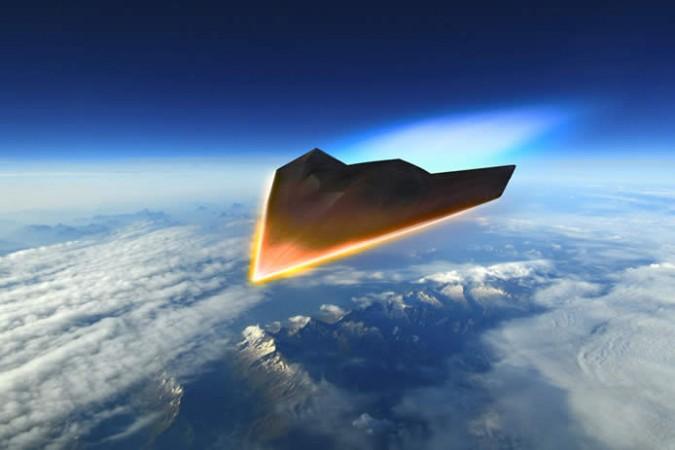
China in November conducted successful tests of a new kind of ballistic missile that incorporates a hypersonic weapon system, a report revealed on Thursday. It was a major achievement by the Chinese military as the weapon, dubbed Dong Feng -17, or DF-17 for short, was the first of its kind ever tested, and was intended for operational deployment.
The People's Liberation Army Rocket Force (PLARF), which controls China's nuclear and conventionally-armed ballistic missiles, conducted two tests of the DF-17, with the first one taking place on November 1 and the second one on November 15, the Diplomat reported, citing an anonymous US intelligence source.
The flight-tests of what is claimed to be the first-ever hypersonic glide vehicle (HGV)-equipped missile followed over half a dozen development tests of the same weapon between 2014 and 2016. During the November tests, the missile was launched from the Jiuquan Space Launcher Center in Inner Mongolia.
Beating the speed of sound
The DF-17 is said to be capable of achieving speeds of up to 12,360 kph, or 10 times the speed of sound. During the tests, the missile's payload flew approximately 1,400 km in nearly 11 minutes with the HGV, though US intelligence experts expect it to have a range capability between 1,800 and 2,500 km.

The source also told the publication that the missile, which is expected to be capable of delivering both nuclear and conventional payloads, made impact "within metres" of its intended target at a site in Xinjiang Province, with the HGV powering much of the flight during the glide phase.
HGVs are capable of deceiving traditional ballistic missile radars by flying lower than what these radars can typical scan. Although this trait makes HGVs difficult to defend against, they fly slower than ballistic missile warheads while descending against their targets, and become easily visible.
According to current US intelligence assessments, the DF-17 could enter service in 2020, the year which is also expected to witness the completion of the world's fastest wind tunnel to test hypersonic flights by China.
Recent reports revealed that the facility can help a hypersonic vehicle travel at a remarkable speed of 12 kilometres per second, allowing it to strike targets in the west coast of the US within 14 minutes.
What can the US do to counter it?
While the DF-17 isn't a revolutionary addition to the missile warfare, it does provide China a significant competitive edge over well-armed opponents like the US, which needs to upgrade its existing missile defence systems, such as THAAD, to better deal with HGVs.
Lockheed Martin has reportedly been working on an extended range version of its THAAD missile defence system (THAAD-ER) to counter potential Chinese HGVs. The contractor is said to have been perfecting the THAAD-ER concept for over a decade, and has invested its own research funding to explore and develop the design.
The THAAD-ER, which will be an upgrade of the single-stage THAAD interceptor that uses a two-stage rocket booster, is expected to hit targets at three times the range of the current system.
However, even the THAAD-ER isn't considered as an optimal solution for hypersonic threats, which has prompted the Pentagon to mature other technologies like railguns or directed energy.
But until these are up and running sometime in mid-to-late 2020s, THAAD-ER could serve as an effective alternative. If proper funding for the THAAD-ER begins in 2018, a fielded product can be expected in 2022.
In addition to China, the US and Russia are also developing their own hypersonic weapons. However, neither of them has been known to have successfully tested a system like China did.











![BJP fields Tashi Gyalson for Ladakh; drops sitting MP [details]](https://data1.ibtimes.co.in/en/full/797185/bjp-fields-tashi-gyalson-ladakh-drops-sitting-mp-details.jpg?w=220&h=138)



